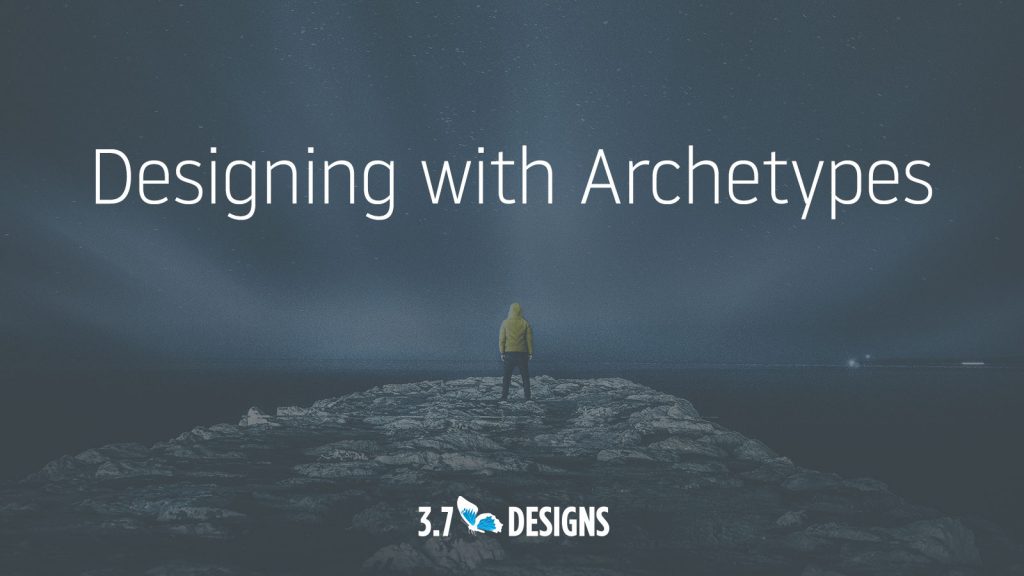
Visual design, like people, has a personality. I’ve said it many times before, visual design is communication. How a design is executed will tell viewers a story about the subject matter represented. The typography, colors, imagery, spacing all work together to form what we often refer to as visual language and design tone.
Much like meeting new people, users make quick judgments about a website based on the personality it portrays. These judgments have the potential to shape the users’ entire experience on the website or stop them from moving forward all together.
An online shopper looking for high quality fashion products won’t spend time on a website with a personality that says “affordable.” Inversely, someone looking for low cost clothing will likely leave a site that looks expensive. Even more frustrating is the scenario where a user seeking out affordable clothing comes across a website that portrays an “affordable” personality, only to find high prices attached to everything they view.
The online shopper will not only assess price based on design personality, but also whom the site is created for. If you were to come across a site that looked like it was designed specifically for your needs you are not only likely to stick around longer, you are more likely to buy something.
Here is the challenge, design tastes are subjective. Different groups of people have different visual preferences; there is no way to create a design that appeals to everyone. So how do you know your design is communicating the right message? The answer is using Archetypes.
What Are Design Archetypes?
Carl Gustav Jung was a Swiss psychiatrist and psychoanalysts who identified imagery and motifs that had a universal, collective understanding. Simply put, Jung found common stories that all humans understand and relate with regardless of culture, history or personal context. References to these stories and figures can be found throughout religion, literature and film.
Archetypes are an incredible tool for designers. By aligning a design with an archetypal figure we can ensure we’re communicating the ideal traits and that our target audience will better understand the brand personality.
The first step in designing with archetypes is to identify which one best fit’s your brand. Let’s discuss the foundational archetypes to give you a better idea.
Possible Archetypes
While the list of archetypes available have evolved over the year’s, we typically reference this list of possibilities:
Caregiver
The caregiver stands for altruism, compassion, patience and empathy. It represents unselfish concern and devotion to nurture and care for others.
Citizen
The citizen stands for stewardship, altruism, respect, fairness and accountability. The citizen is hard working, a good listener and has a deeply instilled sense of integrity.
The Creator
The creator stands for creativity, imagination, nonlinear thought, nonconformity and a developed aesthetic. The creator is passionate about self-expression and being a cultural pioneer.
Explorer
The explorer stands for independence, bravery, freedom, self-sufficiency and non-conformity. Motivated by a powerful craving for new experiences and thriving in autonomy.
Hero
The hero stands for self-sacrifice, courage, redemption, transformation, faith, strength and stamina. This archetype overcomes great odds and completes extraordinary acts of strength, courage and goodness.
Innocent
The innocent stands for unbridled sense of wonder, purity and freedom from preconceptions. The archetype displays unconditional love, honesty and wholesomeness.
Jester
The jester stands for humor, originality, irreverence and being present in the moment. The jester lights up the world through bending perspective, twisting meaning and weaving in the element of surprise.
Lover
The lover stands for faithfulness, passion, vitality and appreciation. This archetype craves closeness and collaboration, attracting and giving love and devotion.
Magician
The magician stands for enormous dreams, mystery, intuition and cleverness. The archetype is dynamic, influential and charismatic, able to view the world through multiple different lenses.
Outlaw
The outlaw stands for leadership, risk taking, provocative though, bravery and personal power. The outlaw is a force to be reckoned with, looking for social change and bringing fresh perspectives, new outlooks and aspiration for change and awakening.
Sage
The sage stands for wisdom, intelligence and truth. The archetype is clear of thought and is rational in decisions. This archetype believes that thinking defines human experience and is always seeking expertise and giving wise advice.
Sovereign
The sovereign stands for rank, tradition, benevolence and nobility. The archetype is a model of proper behavior, privilege and royalty. Connected with status and tradition, the sovereign is controlled, watchful and measured.
Incorporating Archetypes into Design
Archetypes give you a universally recognized framework to guide your design process. Once identified, the archetype should influence every visual design decision.
Archetypes serve as more than just a roadmap, they can also guide the feedback process. By having an independent and agreed upon reference point, you can direct discussions on changes away from personal preferences and towards a strategic target.
They can also be used for validation. By running a five second test and asking outside subjects how they would describe the personality of the concept you can see if the design actually aligns with your chosen archetype.
The key is deep knowledge around each archetype. I recommend the Hero and The Outlaw and Archetypes in Branding for further learning.
If you’re looking for a company to help identify your brand’s archetype, reach out to our Michigan-based design company.
FREE GUIDE
10 Steps to Fix Website Lead Generation
Download our free guide to learn the top reasons users don’t convert on website, how to address objections, and actionable tips that can increase website conversion rates by up to 300% in one month or less.